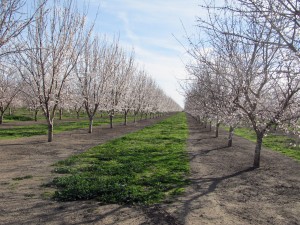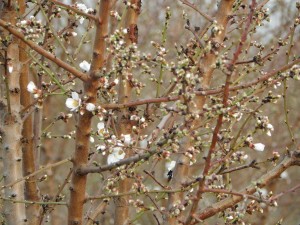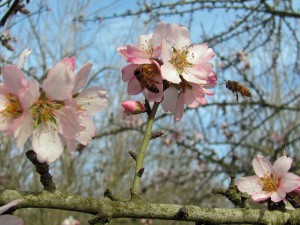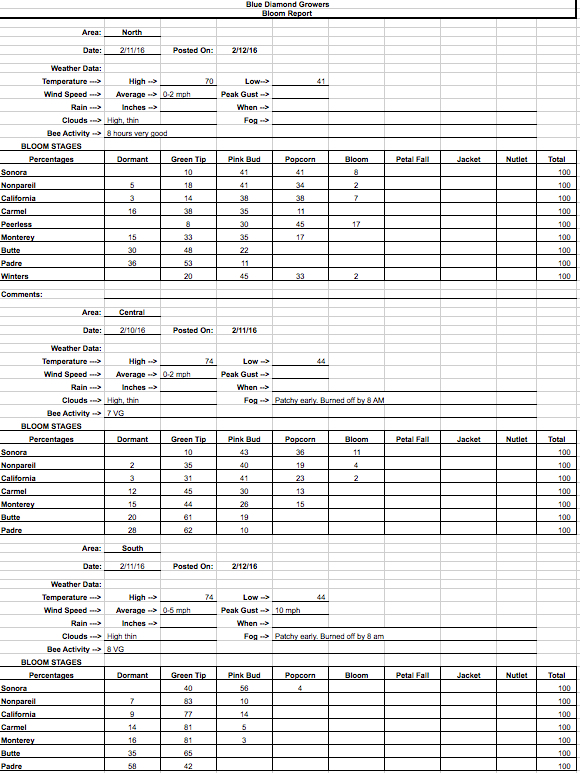
Director, Member Relations
This report covers conditions and observations made on Thursday, February 11, 2016.
Northern Region –
Warm weather continues in the northern region, with daytime temperatures reaching into the 70s and overnight lows staying in the mid 40s. Calm winds and mostly sunny skies provided bees with favorable conditions for much of the day.
The warm conditions have encouraged bloom progression to move quickly throughout the north. The western side of the valley along the 1-5 corridor continues to be about a day behind the central and eastern side of the Sacramento Valley where Sonora and Nonpareil varieties are nearly out of the green tip stage.
Growers are looking ahead to the possibility of rain in the middle of next week. Growers with access to well water are applying water and fertilizer to help build a strong soil profile through bloom while continuing other maintenance activities.
Central Region –
Above average temperatures continue in the Northern San Joaquin Valley. Overnight lows in the mid 40s gave way to daytime highs in the mid 70s with clear skies and low winds. Bees had 7 excellent hours of flight to pollinate the oncoming bloom.
The above-average temperatures continue to advance bloom at a rapid pace in the central region. The early blooming Sonora variety has over 10% of its flowers presenting for pollination. Nonpareil and its California-type pollinizers are two to three days behind and at similar stages of development with one another. The Monterey and Carmel varieties continue to be a day behind Nonpareil. Meanwhile, the later blooming Butte and Padre have almost no dormant buds remaining and more pink tissue is starting to emerge from the sepals daily.
New orchards are being planted as growers are taking advantage of the dry weather. Many growers have taken delivery of their fungicide material in anticipation of some wet weather next week. Growers along the west side of the valley with access to well water have begun irrigating to more completely fill their soil profile prior to bloom.
Southern Region –
Temperatures continued to trend above the seasonal average for the South San Joaquin Valley. Overnight lows in the mid 40s gave way to daytime highs in the mid 70s after some early fog cleared. Low winds and relatively clear skies made for nearly 8 hours of very good bee activity. Warm weather is also continuing to spur bud development at a quick pace.
There is a wide degree of variability within the southern region in terms of development. In Madera County, where water stress and salt damage have been the most prevalent, the early blooming Sonora variety has around 2% of flowers presenting for pollination. Conversely, in Fresno County where water and salt stress are less prevalent, only about 1% of the buds have pink tissue emerging from the sepals. This kind of variation is being observed in all varieties. On average the Nonpareil cultivar in the area is over 80% green tip with a few buds left in dormant and pink tissue starting to emerge on some buds. The California pollinizers are slightly ahead of Nonpareil while Carmel and Monterey are slightly behind. Later blooming Butte is about two-thirds out of dormant into green tip while the Padre variety is almost halfway through dormant.
Bee keepers continue to move bees into orchards to try and stay ahead of bloom. Fungicide applications should begin this weekend with the threat of rain on the horizon. Growers with access to water are irrigating to strengthen their moisture profiles.



